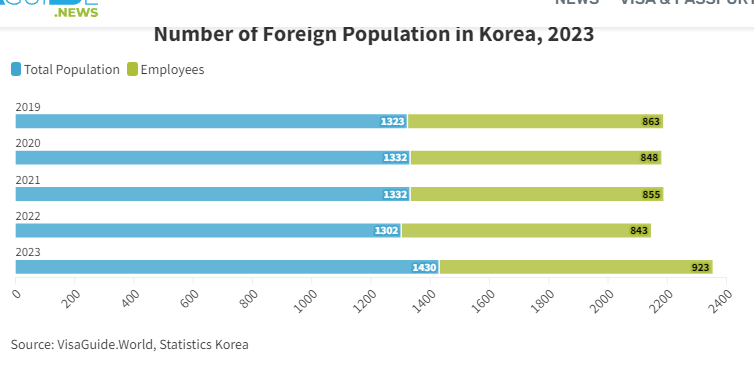Nearly 480,000 internationals migrated to Korea in 2023, marking an increase of 16.2 percent from a year ago.
The figures from Statistics Korea reveal that of the total, 173,000 internationals or 36.1 percent came to Korea for work purposes, VisaGuide.World reports.
2023’s statistics reveal that this accounts for a 25.5 percent increase compared to 2022 figures, and it is the second most significant contingent since 2000, the year that Statistics Korea began compiling data on this subject.
The highest number of internationals heading to Korea for work purposes was registered in 2008, with a total of 176,000 arrivals.
The same source reveals that the number of internationals who reached the country for short-term stay accounted for 21.0 per cent of the total, 17.3 per cent for study and training programs and 12.1 per cent for marriage and permanent residency.
At the same time, the number of internationals who left the country increased by 30.5 percent to a total of 319,000 in 2023.
165,000 Internationals Allowed to Work in Korea Under The E-9 Visa
The notable increase in the number of internationals who entered Korea last year for work purposes was attributed to a higher quota for E-9 visas or non-professional employment visas for internationals as well as foreign jobseekers and the eased rules on employment of overseas South Koreans.
Last year, authorities in Korea unfolded plans to permit a record 165,000 internationals to work in the country under the employment permit system during this year.
The fields in which international workers could be engaged have also expanded including restaurants, forestry and mining.
The employment permit system in Korea allows small and medium-sized enterprises facing labor shortages to hire international workers.
The annual employment quota, which until 2022 was set at 50,000 to 60,000, has increased to 120,000 in 2023 and 165,000 in 2024.
This will be the most significant number of E-9 visas to be issued in a year, since 2004.
As structural factors such as the decline in the productive population remain, the demand for foreign labor [permits] continues, especially in some service industries with a high proportion of vacancies.
Korea’s government
The distribution of labor industries reveals that the number of international workers permitted in the service industry will nearly quintuple from 2,870 in 2023 to 13,000 in 2024.




